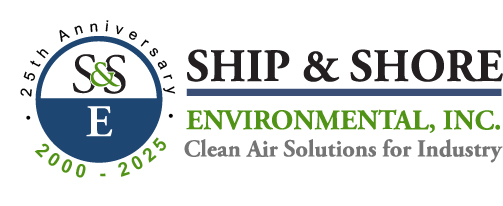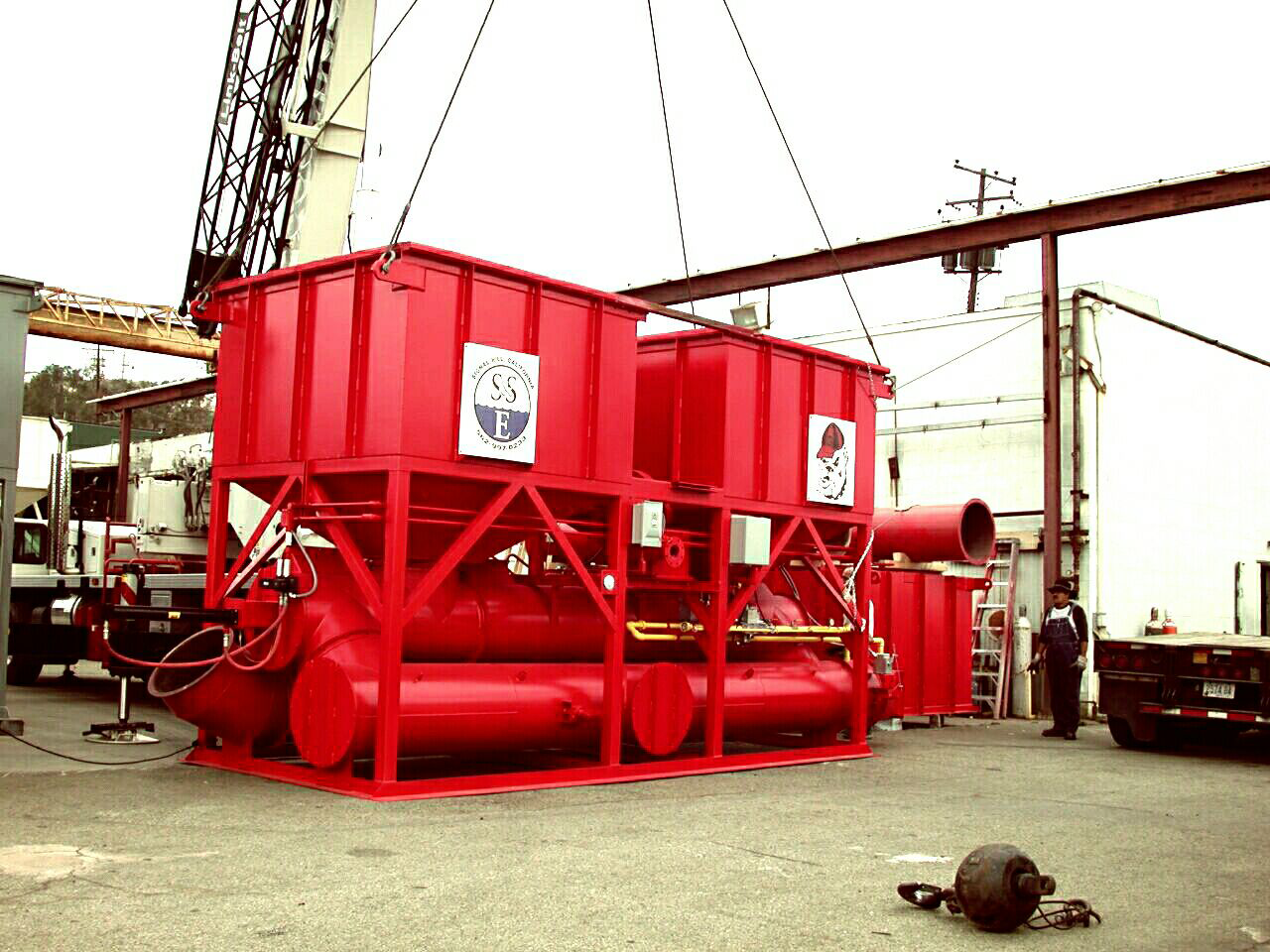
Optimizing Efficiency with SCR Commissioning and Startup Procedures
September 24, 2025 6:13 amIntroduction to SCR Commissioning and Startup Procedures
At Ship & Shore Environmental, Inc., we understand the critical importance of successful SCR commissioning and startup procedures. An SCR (Selective Catalytic Reduction) system is integral to reducing NOx emissions from industrial processes, and initiating these systems correctly is vital for ensuring optimal functionality and environmental compliance. Commissioning and startup procedures encompass a series of meticulous steps designed to confirm that the SCR system is installed, operates as intended, and meets specified performance standards. Understanding these procedures not only ensures system efficiency but also prolongs the lifespan of the equipment.
Importance of SCR Systems in Industrial Processes
In today’s industrial landscape, compliance with stringent environmental regulations is more important than ever. The role of SCR systems in reducing nitrogen oxide (NOx) emissions cannot be overstated. NOx gases are a major contributor to air pollution, leading to adverse health and environmental effects. SCR systems use a catalyst to convert NOx into harmless nitrogen and water vapor. This process is essential for industries such as power generation, chemical manufacturing, and any operation involving combustion processes. By implementing effective SCR commissioning and startup procedures, industries can significantly mitigate their environmental impact and improve air quality.
Insight into the Main Objectives of SCR Commissioning and Startup
The primary objectives of SCR commissioning and startup procedures are multifaceted. Firstly, it is crucial to verify that all components of the SCR system are correctly installed and free from defects. This involves thorough inspections and tests to ensure mechanical, electrical, and control systems are operational and integrated seamlessly. Another key objective is to calibrate the system so that it functions at its highest efficiency. Proper calibration ensures that the correct amount of reagent is injected into the SCR system, optimizing the reduction of NOx.
Moreover, it is essential to perform safety checks during the commissioning and startup phase. Safety protocols must be adhered to rigorously to prevent accidents and ensure the protection of personnel and equipment. Additionally, the performance of the SCR system must be evaluated under various operating conditions to confirm that it meets the expected emission reduction targets. By achieving these objectives, we ensure that our SCR systems not only comply with regulatory standards but also contribute to sustainable industrial operations.
Necessary Preparations for Effective SCR Commissioning
Before diving into the nuts and bolts of SCR commissioning and startup procedures, it’s crucial to start with comprehensive preparations. Proper planning sets the stage for successful implementation and guarantees that the system operates optimally from the get-go.
First, evaluate the existing infrastructure. Ensure that all components are in good condition and compatible with the SCR system. A preliminary audit will help identify any potential issues that could hinder the startup process.
Next, gather your team. Ensure that all members are adequately trained and familiar with the systems. Conduct training sessions if necessary. The human element is as critical as the mechanical components in ensuring smooth operations.
Material preparation is another pivotal step. Make sure you have all the necessary parts, including spare components, readily available. Even minor delays due to missing parts can lead to significant setbacks in the commissioning process.
Finally, secure all relevant permits and regulatory approvals. This step is often underestimated but it’s a critical component. Failure to comply with regulatory requirements can result in severe delays and potential penalties.
The Step-by-Step Guide to SCR Startup Procedures
Initiating the SCR system involves a series of systematic steps designed to ensure all components work harmoniously. The process is meticulous but following it will prevent setbacks and optimize efficiency.
First, conduct a thorough inspection of the mechanical and electrical systems. This ensures that all components are correctly installed and functioning as intended. Address any discrepancies immediately to avoid complications during startup.
Next, initiate the dry run. This involves operating the system without loading it with the actual contaminants. Check if the system operates within the required parameters. Fine-tune the settings as needed.
Following the dry run, complete the wet run. Introduce contaminants at low concentrations and monitor the system’s performance. Gradually increase the contaminant level, ensuring that the SCR system manages the load efficiently. Adjust operational settings based on the findings.
Once the wet run is satisfactory, conduct a comprehensive performance evaluation. Measure the system’s effectiveness in reducing emissions. Verify that it meets all performance criteria set during the design phase.
Key Factors to Consider during SCR Commissioning and Startup Processes
When working through SCR commissioning and startup procedures, several critical factors require special attention:
- Temperature Management: SCR systems improve their effectiveness at high temperatures. Monitor and maintain optimal temperature ranges to ensure peak performance.
- Ammonia Injection: Ammonia is crucial for the SCR process. Ensure that the injection rate is consistent with the model’s specifications.
- Flow Distribution: Even distribution of exhaust gases across the catalyst surface is vital. Uneven flow can lead to hotspots and reduced effectiveness.
Moreover, continuous monitoring is indispensable. Real-time data collection allows for immediate adjustments and ensures that any deviations from expected performance are quickly rectified.
Communication among team members remains essential throughout this process. Regular meetings help keep everyone updated on the system’s status and any challenges encountered. This collaborative approach facilitates a smoother commissioning process and reduces the likelihood of errors.
Did you know? Proper commissioning and startup of SCR systems are crucial for reducing industrial pollutants and ensuring long-term efficiency.
How Proper SCR Commissioning and Startup Procedures Impact System Efficiency
The meticulous adherence to SCR commissioning and startup procedures greatly impacts the overall efficiency and safety of selective catalytic reduction (SCR) systems in industrial applications. At Ship & Shore Environmental, Inc., we understand that these initial steps set the foundation for a consistently high-performing and reliable system. When executed correctly, proper commissioning and startup ensure that our SCR systems operate within the desired parameters, effectively reducing harmful emissions and enhancing fuel efficiency.
The attention to detail during the initial setup phase allows us to pinpoint and rectify any discrepancies or potential issues before the system becomes fully operational. This proactive approach not only ensures compliance with environmental regulations but also extends the lifespan of the SCR system by preventing premature wear and tear. By investing the time and resources into a thorough commissioning process, we can safeguard against costly downtimes and maintenance, thereby increasing the overall return on investment.
Noteworthy Challenges in SCR Commissioning and Startup and How to Overcome Them
Despite the considerable benefits, several challenges may arise during SCR commissioning and startup procedures. Common issues include unexpected equipment malfunctions, calibration errors, and integration difficulties with existing systems. At Ship & Shore Environmental, Inc., we tackle these challenges head-on by leveraging our extensive experience and technical expertise. Our team performs rigorous pre-commissioning checks and thoroughly tests all components to ensure they meet industry standards.
We also place a strong emphasis on comprehensive training for our technical staff, ensuring they possess the knowledge and skills to address any issues that may arise. Moreover, we value clear and open communication with our clients, keeping them informed throughout the commissioning and startup process. This collaborative approach enables us to swiftly identify and resolve problems, minimizing delays and disruptions.
Encouraging Sustainability: The Long-Term Benefits of Proper SCR Commissioning and Startup
Proper SCR commissioning and startup procedures not only enhance operational efficiency but also contribute to our greater sustainability goals. By ensuring that our SCR systems operate at peak performance, we can significantly reduce the emission of pollutants such as nitrogen oxides (NOx) and particulate matter, aligning with stringent environmental regulations and industry best practices.
Moreover, a well-commissioned SCR system requires less frequent maintenance and repair, which translates to lower operational costs and a reduced environmental footprint. Our commitment to sustainability extends beyond the initial setup, as we offer ongoing support and maintenance services to ensure that our systems continue to operate efficiently throughout their lifecycle.
Emphasizing proper equipment installation further bolsters the longevity and reliability of our SCR systems, reinforcing our pledge to deliver solutions that are both economically and environmentally sustainable. By prioritizing these procedures, we at Ship & Shore Environmental, Inc. are investing in a cleaner, greener future while providing our clients with dependable, cutting-edge solutions.
FAQ
What are the primary benefits of proper SCR system commissioning?
The primary benefits of proper commissioning include heightened efficiency and reliability of the SCR system. By conducting meticulous initial setup procedures at Ship & Shore Environmental, Inc., we ensure that our systems operate within optimal parameters, leading to improved emissions control and fuel efficiency. Additionally, proper commissioning can extend the lifespan of the SCR equipment by identifying and correcting potential issues early on, thus avoiding costly downtime and maintenance in the future.
How does Ship & Shore Environmental, Inc. approach challenges during SCR startup?
At Ship & Shore Environmental, Inc., we address SCR startup challenges by conducting meticulous pre-commissioning checks and component testing. Our experienced technical team receives comprehensive training to efficiently troubleshoot and resolve any issues that arise. Moreover, fostering clear and open communication with our clients throughout the process allows us to swiftly overcome obstacles, ensuring a smooth and efficient startup.
What steps are involved in the SCR commissioning process?
The SCR commissioning process involves a series of crucial steps, such as verifying equipment installation, conducting functionality tests, and calibrating the system. Initially, our experts at Ship & Shore Environmental, Inc. thoroughly inspect all equipment to ensure proper installation. Subsequently, we perform tests to verify that each component operates correctly. Following the successful completion of these steps, we calibrate the system to match specific operational requirements, guaranteeing optimal performance.
In what ways does proper SCR system setup promote sustainability?
Proper SCR system setup promotes sustainability by significantly reducing harmful emissions, such as nitrogen oxides and particulate matter. A well-commissioned system also demands less frequent maintenance and repair, leading to reduced operational costs and a smaller environmental footprint. Furthermore, our dedication to ongoing support and maintenance ensures that our SCR systems maintain high performance throughout their lifecycle, upholding our commitment to a sustainable future while delivering value and reliability to our clients.
What long-term benefits can be expected from a well-commissioned SCR system?
A well-commissioned SCR system offers numerous long-term benefits, including consistent operational excellence, minimal environmental impact, and compliance with strict emissions regulations. Additionally, it contributes to cost savings by lowering the frequency of maintenance and preventing unexpected equipment failures. At Ship & Shore Environmental, Inc., our commitment to proper commissioning practices reflects our dedication to supporting our clients’ long-term success and environmental stewardship.
Categorised in: Blog

